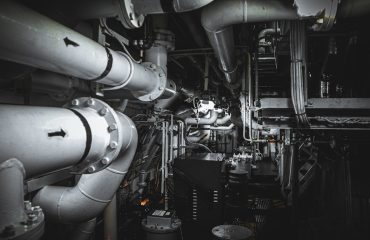body { font-family: sans-serif; line-height: 1.6; }
h1, h2, h3 { color: #333; }
h1 { font-size: 2.5em; }
h2 { font-size: 2em; }
h3 { font-size: 1.5em; }
The steel industry is a cornerstone of global infrastructure, but its traditional production methods have a significant environmental footprint. The urgent need to mitigate climate change and promote resource efficiency is driving a fundamental shift towards sustainable steel supply chains. This transition requires a holistic approach, encompassing every stage from raw material extraction to product end-of-life management. This blog post delves into the key aspects of creating truly sustainable steel supply chains.
1. Responsible Raw Material Sourcing: Minimizing Environmental Impact
The journey to sustainable steel begins with responsible sourcing of raw materials. Iron ore mining, a crucial step, often involves significant land disturbance, water consumption, and greenhouse gas emissions. Sustainable practices in this area include:
- Minimizing land disturbance: Employing techniques like precision mining and reclamation to reduce the environmental footprint of mining operations.
- Efficient water management: Implementing water recycling and reuse systems to minimize water consumption and prevent pollution.
- Reducing greenhouse gas emissions: Investing in renewable energy sources to power mining operations and exploring carbon capture and storage technologies.
- Sustainable transportation: Optimizing logistics and utilizing fuel-efficient transportation methods to reduce emissions associated with transporting raw materials.
- Responsible sourcing certifications: Adhering to industry-recognized certifications and standards that ensure responsible mining practices.
2. Energy Efficiency and Carbon Emission Reduction in Steel Production
Steel production is an energy-intensive process, responsible for a substantial portion of global greenhouse gas emissions. Reducing this footprint requires significant technological advancements and operational changes:
- Transitioning to renewable energy: Utilizing solar, wind, and hydro power to replace fossil fuels in steel mills.
- Implementing energy-efficient technologies: Adopting advanced technologies like electric arc furnaces (EAFs) which have a lower carbon footprint compared to blast furnaces.
- Carbon capture, utilization, and storage (CCUS): Investing in CCUS technologies to capture CO2 emissions from steel production and either utilize them or store them safely underground.
- Process optimization: Implementing process optimization techniques to reduce energy consumption and material waste throughout the steelmaking process.
- Hydrogen-based steelmaking: Exploring and investing in hydrogen-based steelmaking, a potentially game-changing technology with significantly lower emissions.
3. Embracing the Circular Economy: Recycling and Waste Management
The circular economy principles are central to sustainable steel supply chains. Maximizing the recycling of steel scrap is crucial to reducing the demand for virgin materials and minimizing environmental impact:
- Improving scrap collection and sorting: Investing in efficient scrap collection and sorting infrastructure to ensure high-quality recycled steel feedstock.
- Increasing the use of recycled steel: Promoting the use of recycled steel in construction, manufacturing, and other industries.
- Developing innovative recycling technologies: Investing in research and development of advanced recycling technologies to process various types of steel scrap efficiently.
- Minimizing waste generation: Implementing strategies to minimize waste generation throughout the steel production process and promoting waste reduction initiatives.
- End-of-life management: Designing steel products for easy disassembly and recycling at the end of their life cycle.
4. Promoting Transparency and Traceability throughout the Supply Chain
Transparency and traceability are essential for building trust and accountability within sustainable steel supply chains. This involves:
- Blockchain technology: Utilizing blockchain technology to track the origin and journey of steel materials throughout the supply chain.
- Data-driven monitoring: Implementing data-driven monitoring systems to track environmental performance indicators and identify areas for improvement.
- Open communication and collaboration: Fostering open communication and collaboration among stakeholders throughout the supply chain.
- Third-party certifications: Seeking third-party certifications to validate sustainability claims and ensure transparency.
- Regular audits and reporting: Conducting regular audits and reporting on environmental performance to ensure accountability.
5. Collaboration and Stakeholder Engagement: A Shared Responsibility
Building sustainable steel supply chains requires a collective effort. Collaboration and engagement among all stakeholders are crucial for driving change:
- Government policies and regulations: Implementing supportive government policies and regulations that incentivize sustainable practices and penalize unsustainable ones.
- Industry collaboration: Fostering collaboration among steel producers, suppliers, consumers, and other stakeholders to share best practices and drive innovation.
- Consumer awareness and demand: Educating consumers about the importance of sustainable steel and promoting demand for sustainably produced steel products.
- Research and development: Investing in research and development to develop new technologies and processes that enable more sustainable steel production.
- Capacity building and training: Providing training and capacity building opportunities for workers to develop the skills needed to implement sustainable practices.
Creating truly sustainable steel supply chains is a complex and challenging undertaking, but it is essential for mitigating climate change and ensuring a sustainable future. By embracing responsible sourcing, energy efficiency, circular economy principles, transparency, and collaboration, the steel industry can forge a greener future for generations to come.
SEO Tags:
Sustainable Steel, Green Steel, Steel Supply Chain Sustainability, Circular Economy Steel, Carbon Neutral Steel




